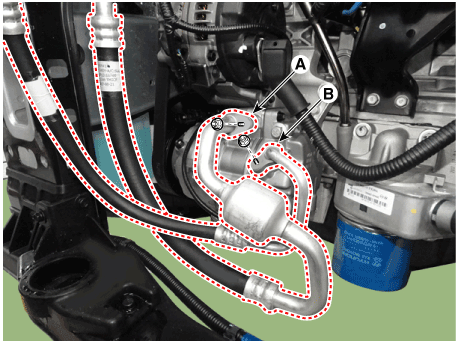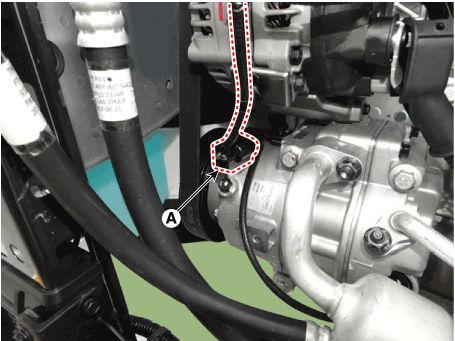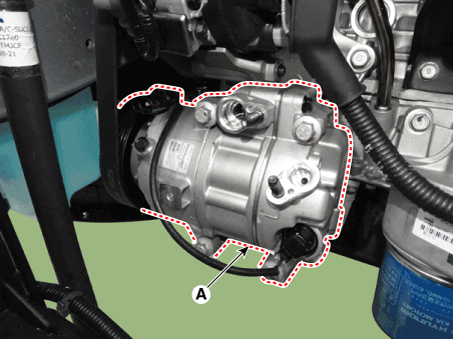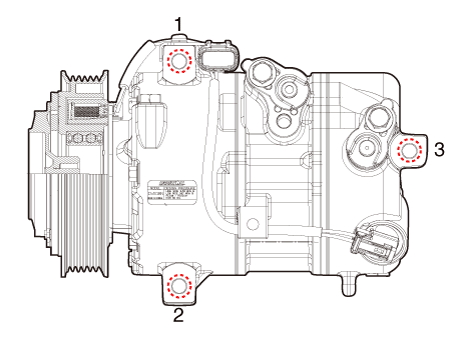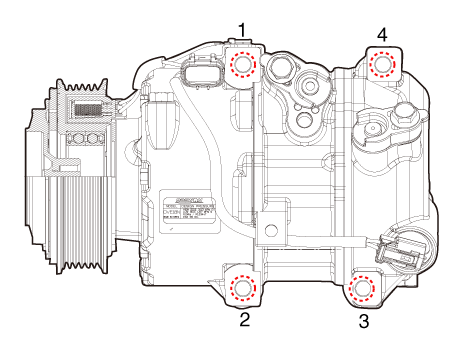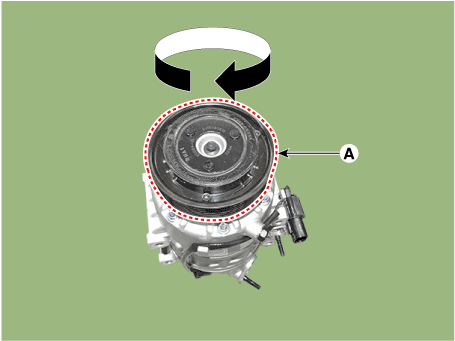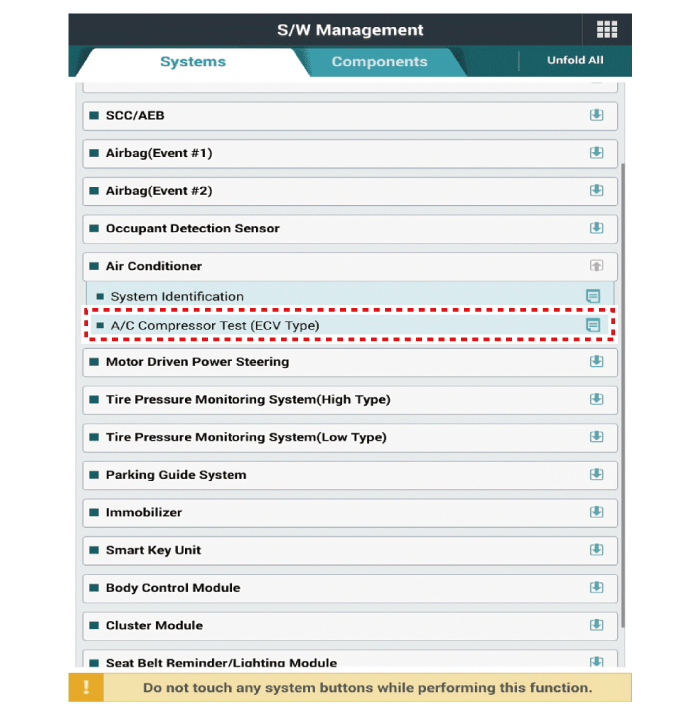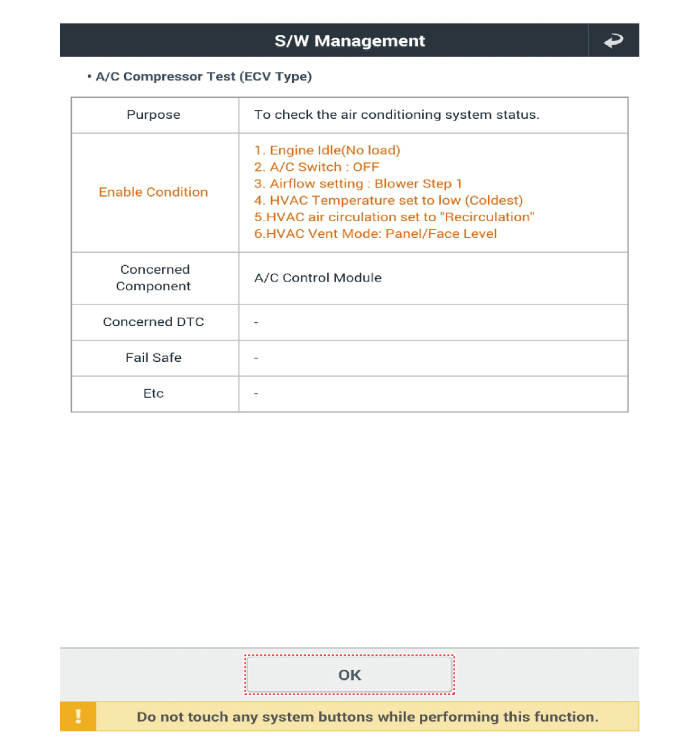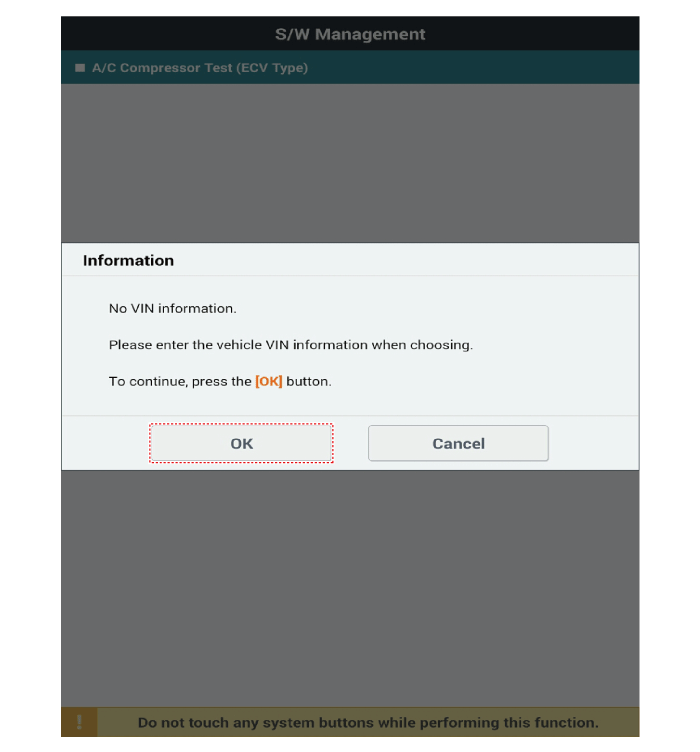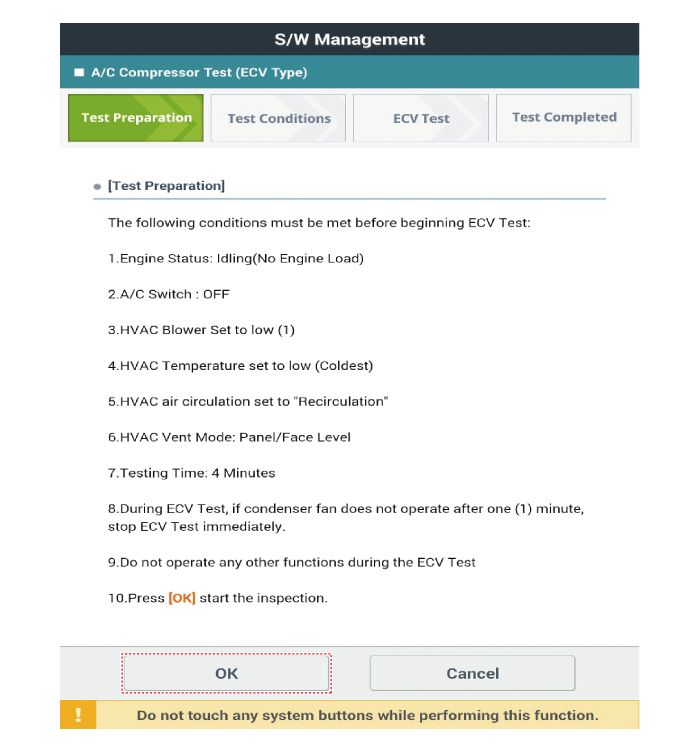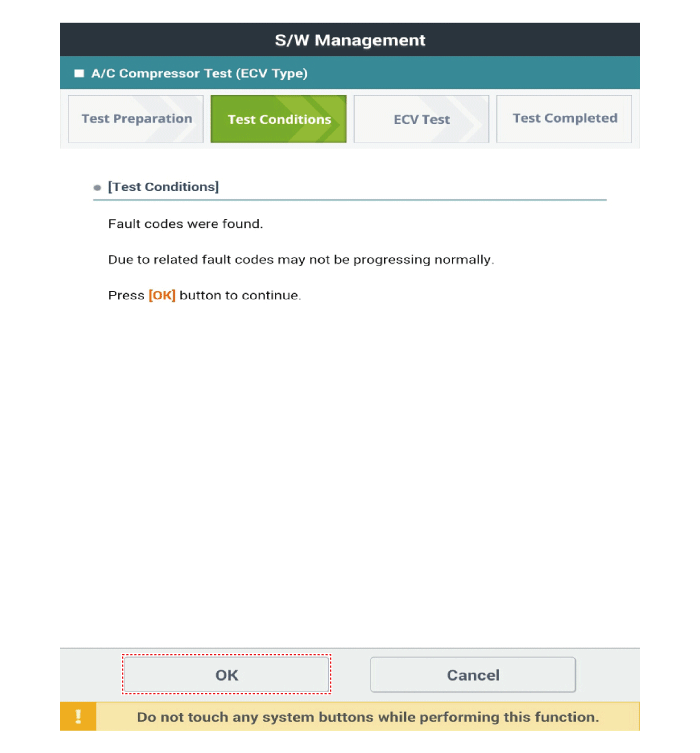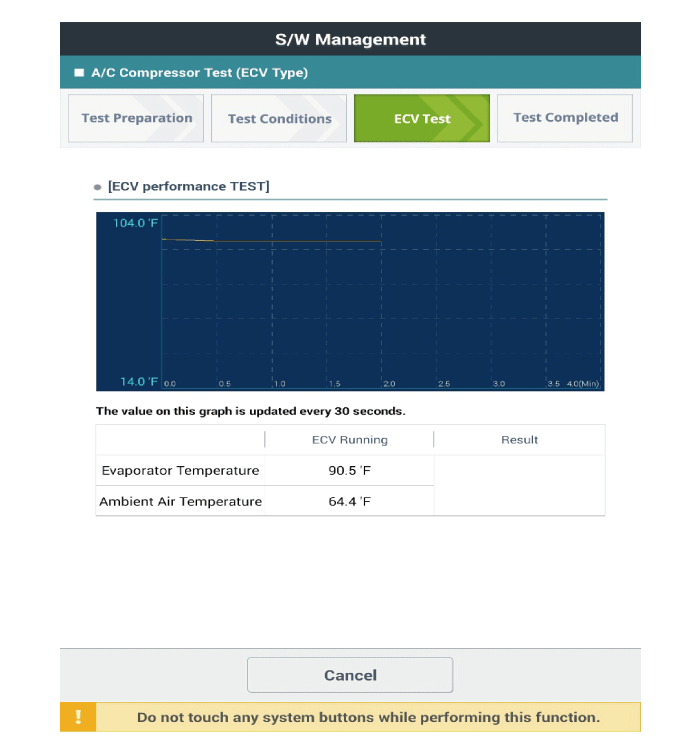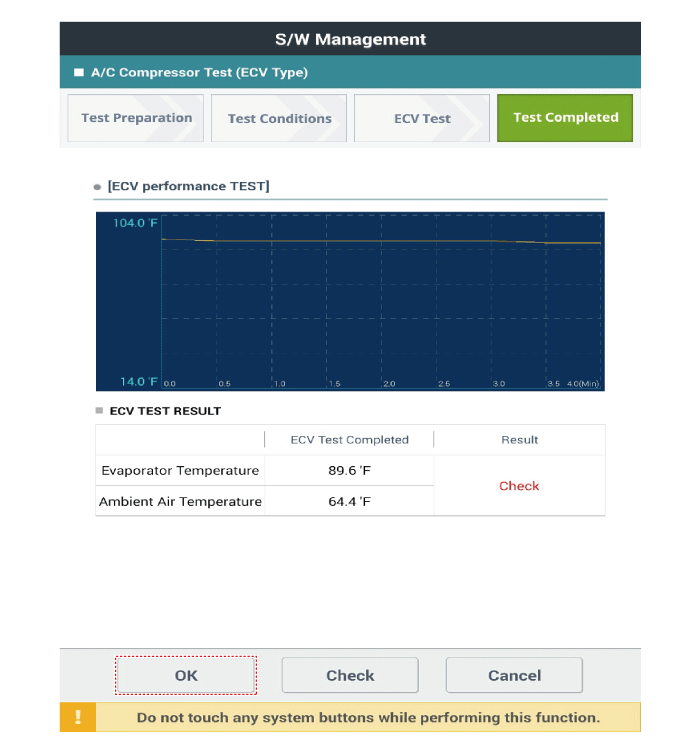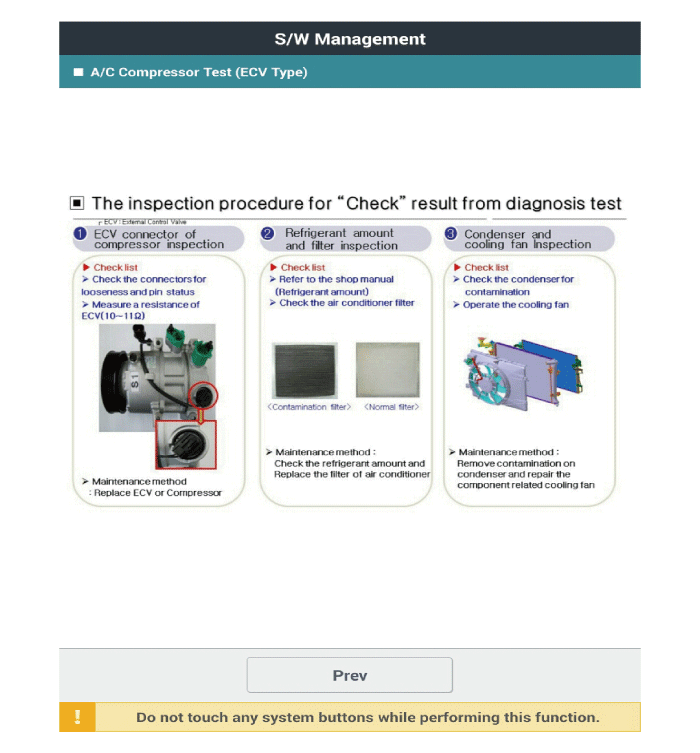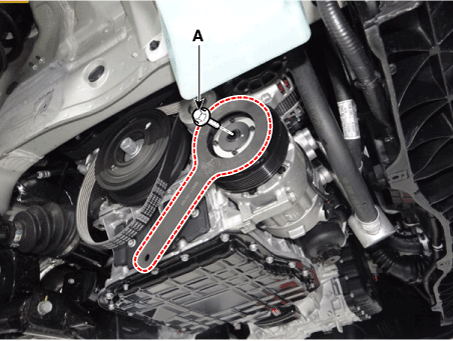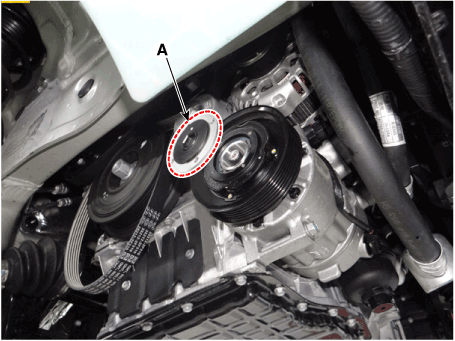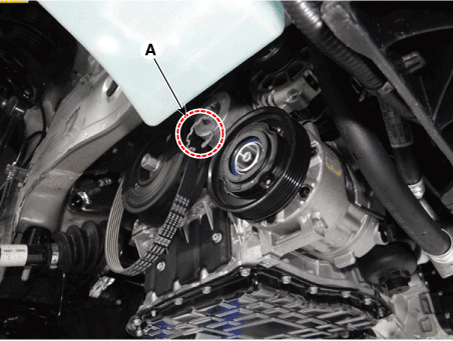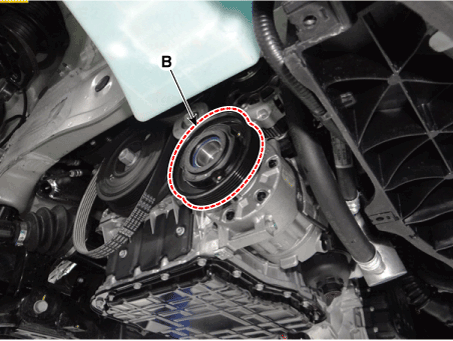Hyundai Palisade: Air conditioning System / Compressor
Description and operation
| Description |
The compressor is the power unit of the A/C system.
It is located on the side of engine block and driven by a V-belt of the engine.
The compressor changes low pressure and low temperature refrigerant gas into
high pressure and high temperature refrigerant gas.
Variable Swash Plate Compressor
The compressor has a swash plate that rotates to reciprocate pistons, which
compress refrigerant.
The variable swash plate compressor controls the swash plate angle to change
the refrigerant displacement. It achieves precise cooling capability control
in accordance with vehicle interior and driving conditions.
The internally controlled variable swash plate compressor changes the swash
plate angle by a MCV (Mechanical Control Valve) in accordance with fluctuation
of a suction pressure.
The externally controlled variable swash plate compressor changes the swash
plate angle by an ECV (Electric Control Valve) in accordance with an electrical
signal from the heater & A/C control unit.
This enables stable temperature control and improved driving sensation.
ECV Control Diagram
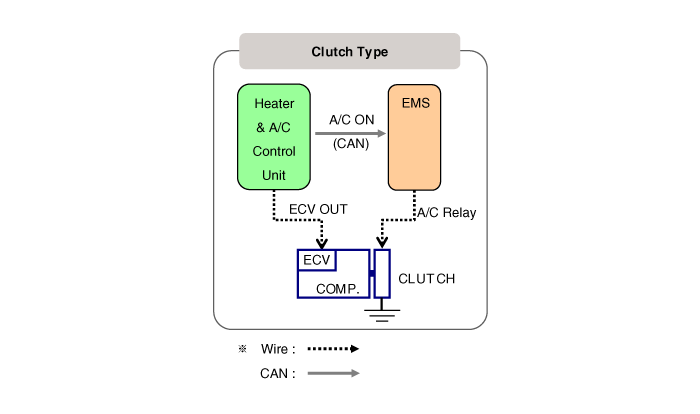
Components and components location
| Components |
[R Engine]
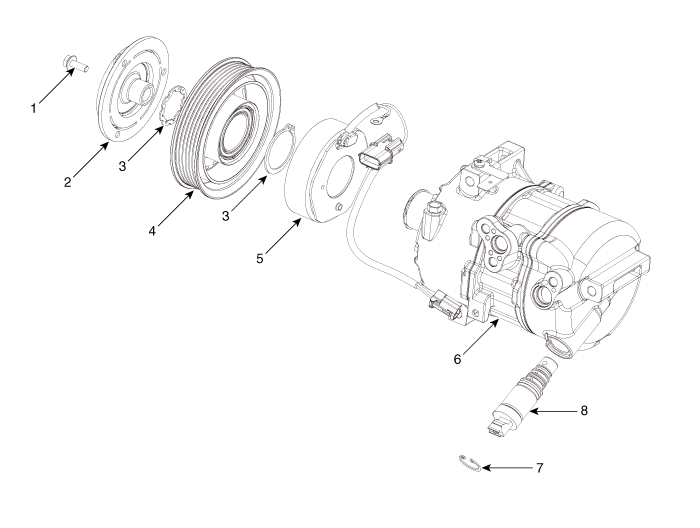
| 1. Clutch bolt 2. Disc & Hub assembly 3. Snap ring 4. Pulley |
5. Clutch magnetic coil 6. Compressor 7. ECV Snap ring 8. Electric Control Valve (ECV) |
[LAMDA Engine]
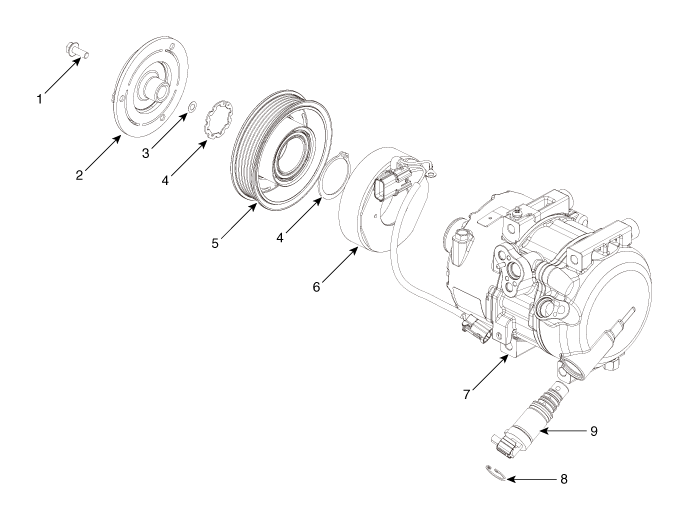
| 1. Clutch bolt 2. Disc & Hub assembly 3. Clutch hub spacer 4. Snap ring 5. Pulley |
6. Clutch magnetic coil 7. Compressor 8. ECV Snap ring 9. Electric Control Valve (ECV) |
Repair procedures
| Removal |
| 1. |
If a compressor is available, the air conditioner is operated for a
few minutes in the engine idle state and then the engine is stopped.
|
| 2. |
Disconnect the negative (-) battery terminal.
|
| 3. |
Recover the refrigerant with a recovery/charging station.
|
| 4. |
Loosen the drive belt.
(Refer to Engine Mechanical System - "Drive Belt")
|
| 5. |
Loosen the mounting nuts and separate the suction line (A), discharge
line (B).
|
| 6. |
Press the lock pin and separate the ECV connector (A).
|
| 7. |
Loosen the mounting bolts and remove the compressor assembly (A).
|
| Installation |
| 1. |
Make sure that the compressor (A) mounting bolt of the correct length
is screwed in. Tighten the mounting bolts in the specified tightening
order.
[R Engine]
[LAMDA Engine]
|
| 2. |
Install in the reverse order of removal.
|
| Inspection |
| 1. |
Check the plated parts of the limiter & hub assembly for color changes,
peeling or other damage. If there is damage, replace the assembly.
|
| 2. |
Check the pulley (A) bearing play and drag by rotating the pulley by
hand. Replace the pulley with a new one if it is noisy or has excessive
play / drag.
|
| External Control Valve Compressor Inspection (GDS) |
Compressor type: Fixed type compressor, External control valve, Internal control
valve.
In cases of fixed type and internal control valve, it is possible to inspect
compressor's operation with clutch noise.
When it comes to External control valve, however, it cannot be checked in this
way bacause it doesn't have a clutch.
So, ECV should be inspected with GDS as below.
| 1. |
Connect GDS to the vehicle and select 'Aircon Compressor Test(ECV type)'
[ECV1]
|
| 2. |
Make the vehicle ready as the GDS instruction on the monitor. (Turn
off A/C 'switch' only)
|
| 3. |
Check if other DTC codes are found before inspect ECV compressor. If
so, solve that problems first. If not, press 'OK' button to continue.
|
| 4. |
Start inspection
|
| 5. |
Check the result of inspection.
[ECV7]
[ECV8]
|
| 6. |
If the result shows "Check" , click "Check" and follow the instruction.
|
| 7. |
Inspect ECV again from the first step.
|
| Disassembly |
| 1. |
Remove the front tire [RH].
|
| 2. |
Loosen the drive belt.
(Refer to Engine Mechanical System - "Drive Belt")
|
| 3. |
Remove the clutch bolt (A) while holding the pulley with a clutch bolt
remover (09977-3R000).
|
| 4. |
Loossen the limiter bolts and then remove the limiter & hub assembly.
|
| 5. |
Remove the pulley (B) after removing the snap ring (A) with a snap ring
plier.
|
| 6. |
Reassemble in the reverse order of disassembly.
|
 Refrigerant Line
Refrigerant Line
Components and components location
Components
[Isometric view]
1. Front suction & Liquid pipe
assembly
[Top view]
1...
 Condenser
Condenser
C..
Other information:
Hyundai Palisade (LX2) 2020-2025 Owner's Manual: System Setting and Operation
System setting • Setting Forward Safety function The driver can activate the FCA by placing the ignition switch to the ON position and by selecting: 'User Settings →Driver Assistance → Forward Safety' - If you select "Active Assist", the FCA system activates...
Hyundai Palisade (LX2) 2020-2025 Service Manual: Seat Belt Pretensioner (BPT)
Components and components location Components 1. Front Seat Belt Pretensioner (BPT) Description and operation Description The Seat Belt Pretensioners (BPT) are installed inside center pillar (LH & RH)...
Categories
- Manuals Home
- 1st Generation Palisade Owners Manual
- 1st Generation Palisade Service Manual
- Normal Maintenance Schedule (3.8 GDI)
- Fuse/Relay Panel Description
- Child-Protector Rear Door Locks
- New on site
- Most important about car
Air Bag - Advanced Supplemental Restraint System
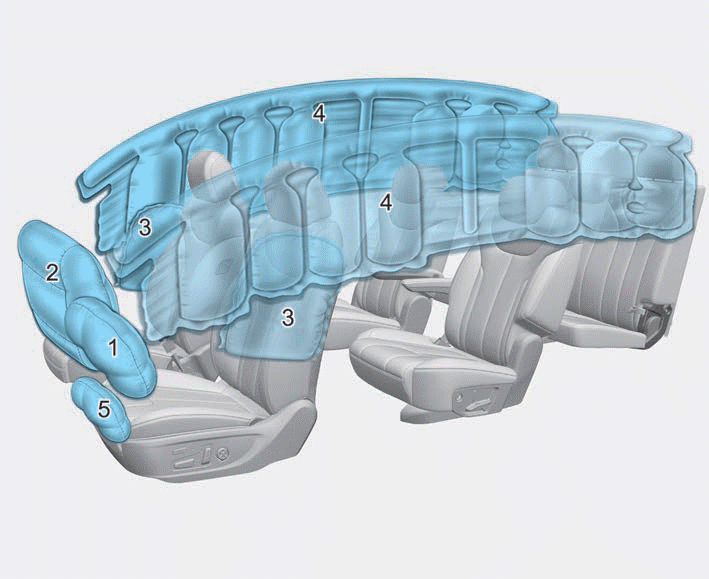
1. Driver's front air bag
2. Passenger's front air bag
3. Side air bag
4. Curtain air bag
5. Driver’s knee airbag
This vehicle is equipped with an Advanced Supplemental Air Bag System for the driver's seat and front passenger's seats.
Copyright © 2025 www.hpalisadelx.com


